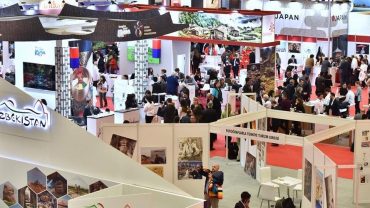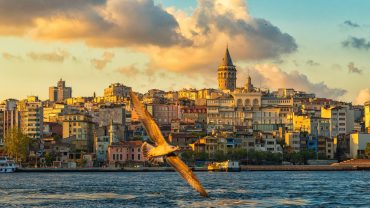Kırıkkale is the capital of the Kırıkkale Province in the Central Anatolia region of Turkey. It is located 80 km east of Ankara. According to the 2000 census, the population of the province is 280,834, of which 192,705 live in the city of Kırıkkale. The name of the city means broken castle.
The town of Kırıkkale is located on the Ankara-Kayseri railway near the Kızıl River in central Turkey. Formerly a village, it owes its rapid rise in population mainly to the establishment of steel mills in the 1950s. These works, among the largest in the country, specialize in high-quality alloy steel and machinery. In the 1960s, chemical plants were added and in 1986, the Tüpraş Kırıkkale Oil Refinery was established.
Kırıkkale University is located in the city.
History
The name of the city supposedly comes from the name “Kırık” a village 3 km north of the city combined with another name called “Kale”, meaning castle, in the centre of the city, the two were put together to make ‘Kırıkkale’. Inhabitation began in the 16th century when Turkish tribes came from the east and settled in Central Anatolia.
Geography
Kırıkkale was recently declared a state in the Central Anatolia region of Turkey which is near Kızılırmak River translating to Red River. The river is used to produce rice for the Turkish economy. The natural vegetation is steppe type, and vineyards are found in abundance.
The region has a very old history. The presence of some historical ruins, ruins and mounds that remain within the borders of the Kırıkkale province today, and the archaeological findings dating back to the years before and some of the researches and investigations show how old the settlement area of Kırıkkale was.
As a result of considering the ceramic samples which were found in the region, it is most likely that settlements have been built in and around the region since the Neolithic Age. Kırıkkale, which is thought to be a settlement throughout history, also hosted the Roman-Byzantine Empire. After the victory of Manzikert in 1071, the gates of Anatolia were opened to the Turks, and they were quickly turned into a Turkish-Islamic land. It is seen that it was one of the first conquered Islamic towns in some parts of Kırıkkale province at that time.
Within the boundaries of the city, there are houses, mosques, mounds, tumuli, ruins, sites which protected as separate structures. It is enough to understand the importance of the province, which has a long history and on the route of the Silk Road, and that Evliya Çelebi mentions Yahşihan and Sulakyurt districts in terms of history and culture tourism.
In terms of religious tourism, Kırıkkale, contains many historic mosques and shrines which help the city to become a very popular stop. Haydar Sultan Mosque and Tomb, Koçubaba Mosque and Tomb, Ballı Mosque and Tomb are just a few of these places.
With its promenade places, highlands, typical Anatolian villages, Kızılırmak and its valley and rivers, Kırıkkale is one of the must-see places.
The Weapon Museum it contains consists of weapons from the Ottoman and European countries. After determining these weapons and historical features from various places in Anatolia and military factories from Tophane, they are exhibited in a special hall designed in the museum. This museum has an important place in terms of cultural tourism.





Comment (0)